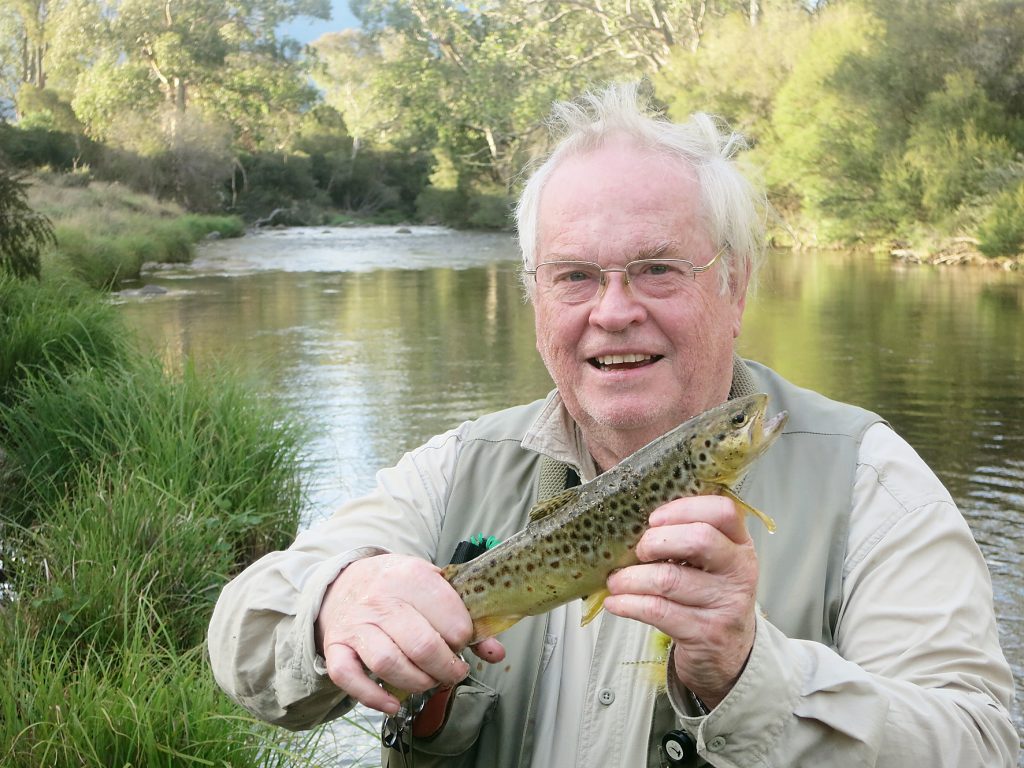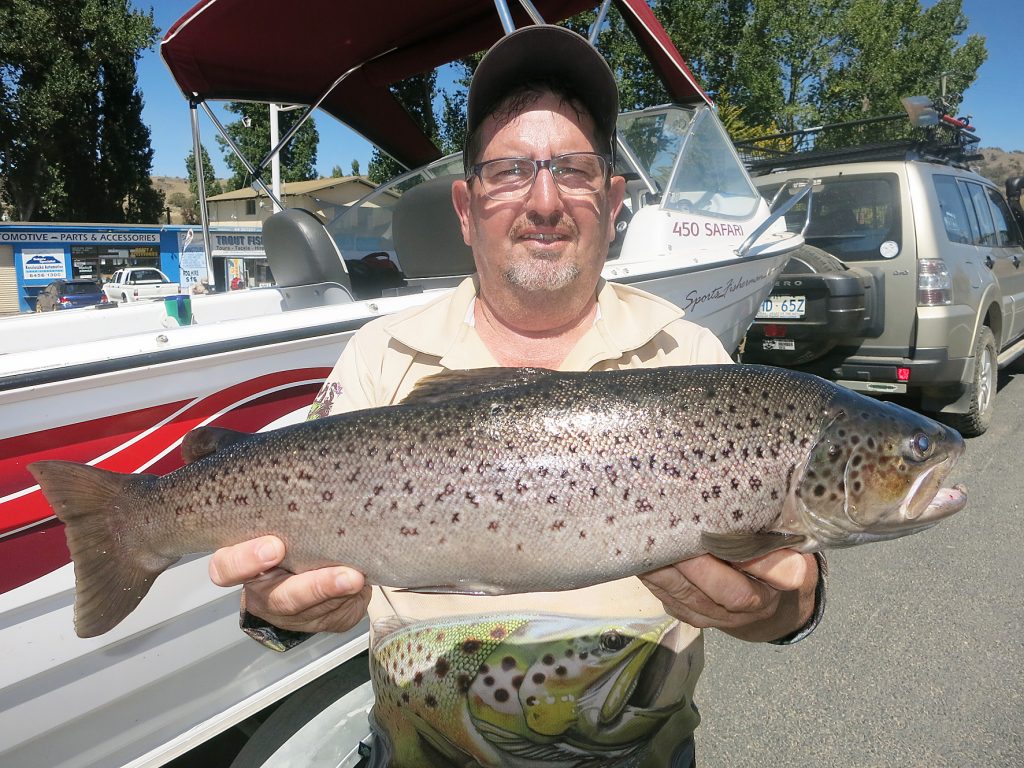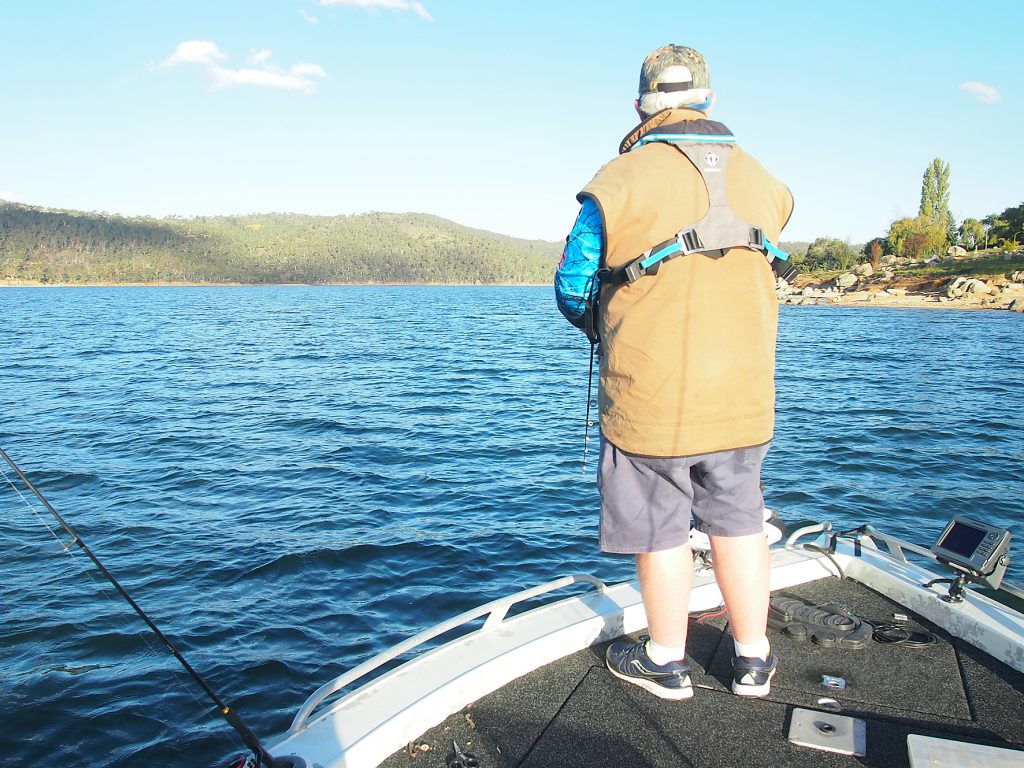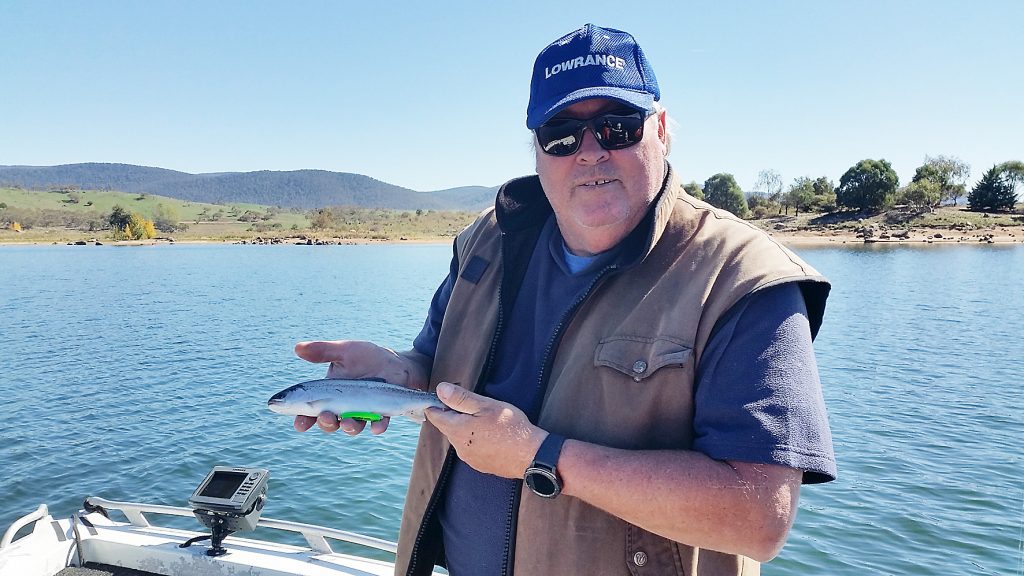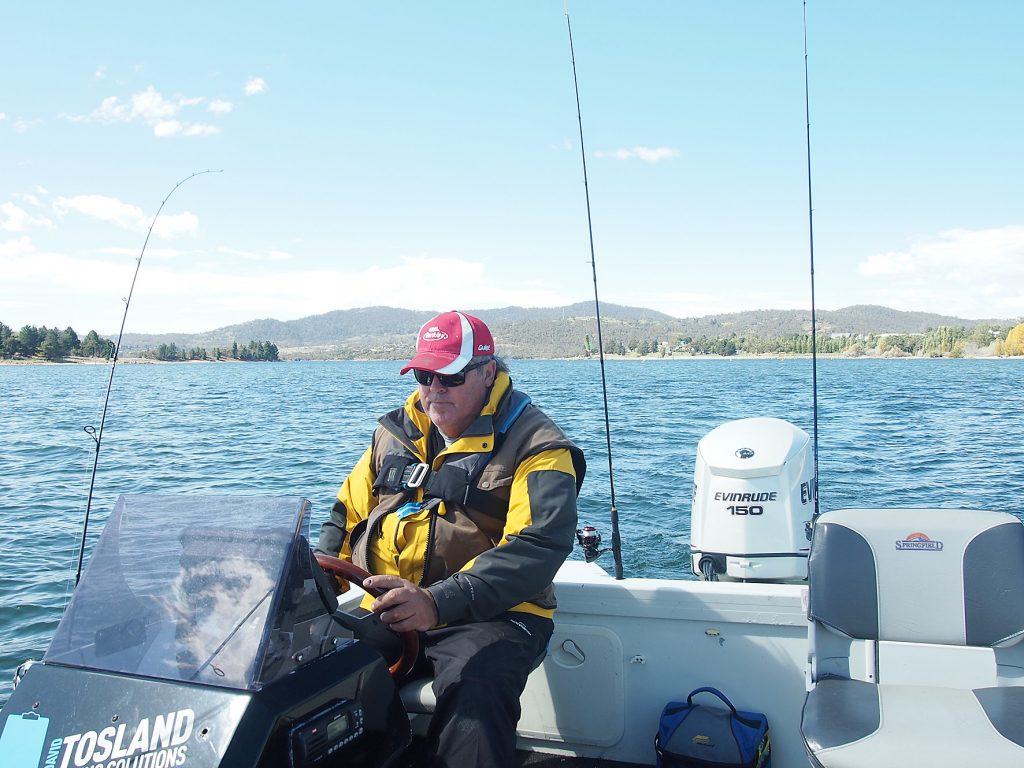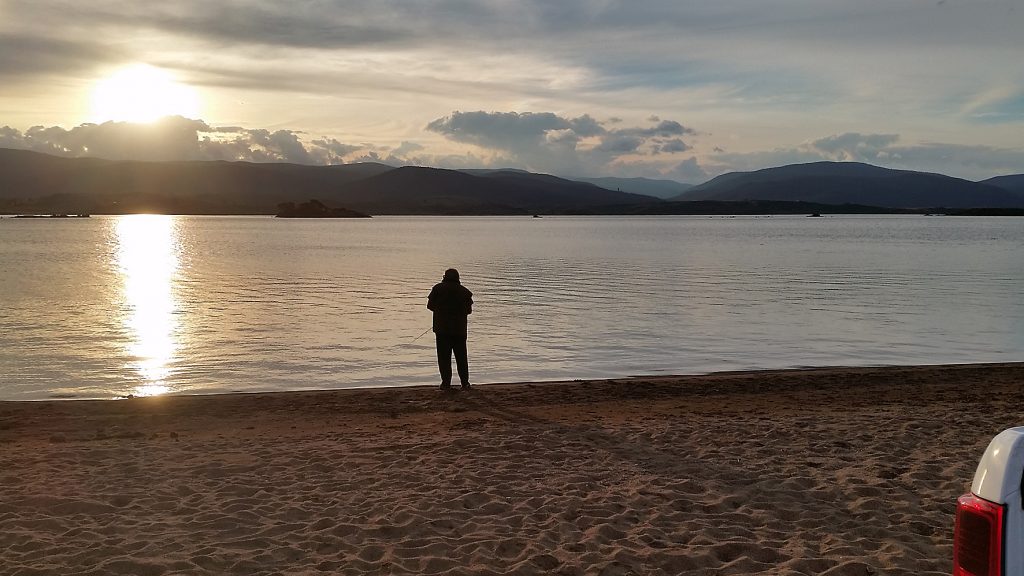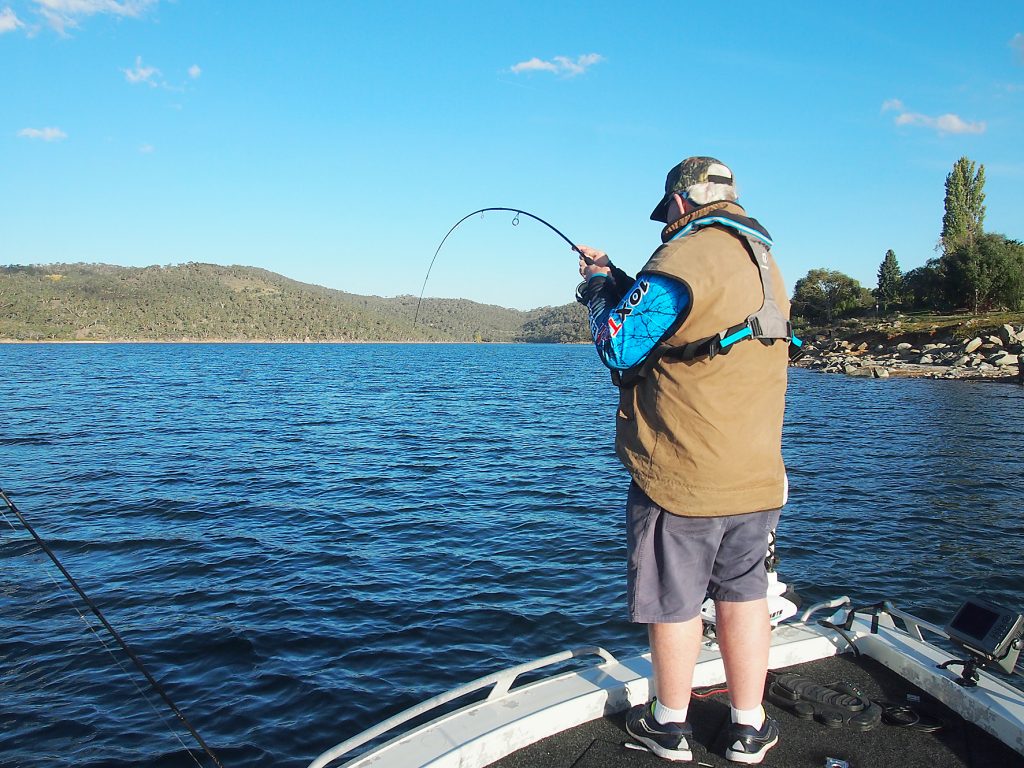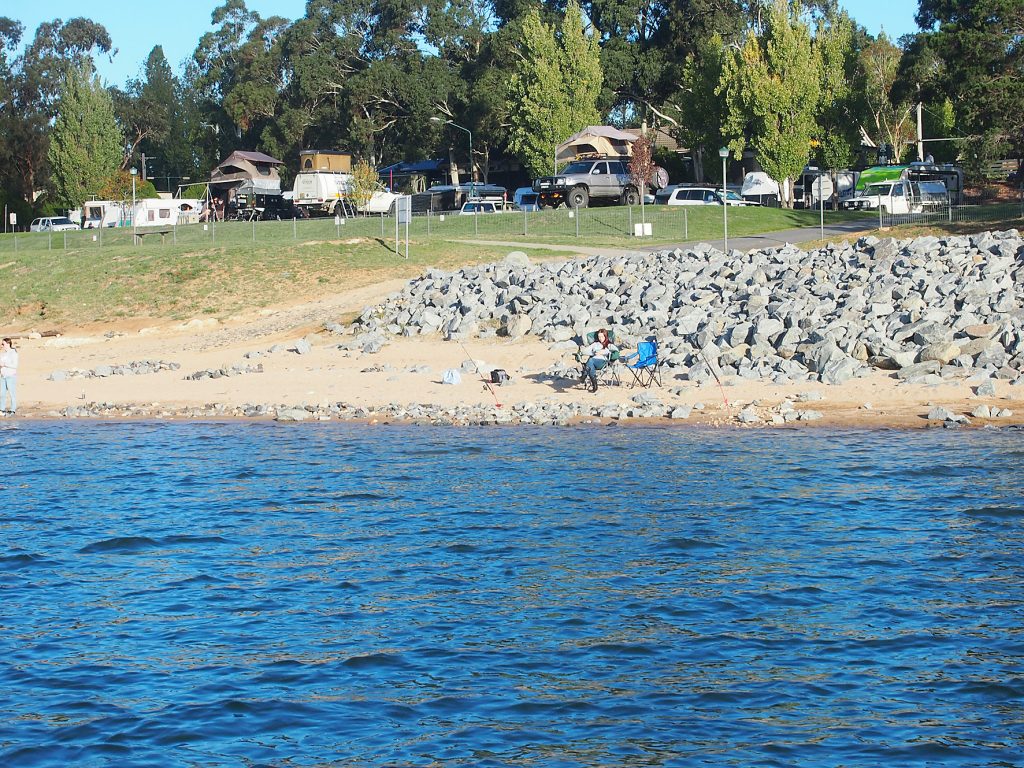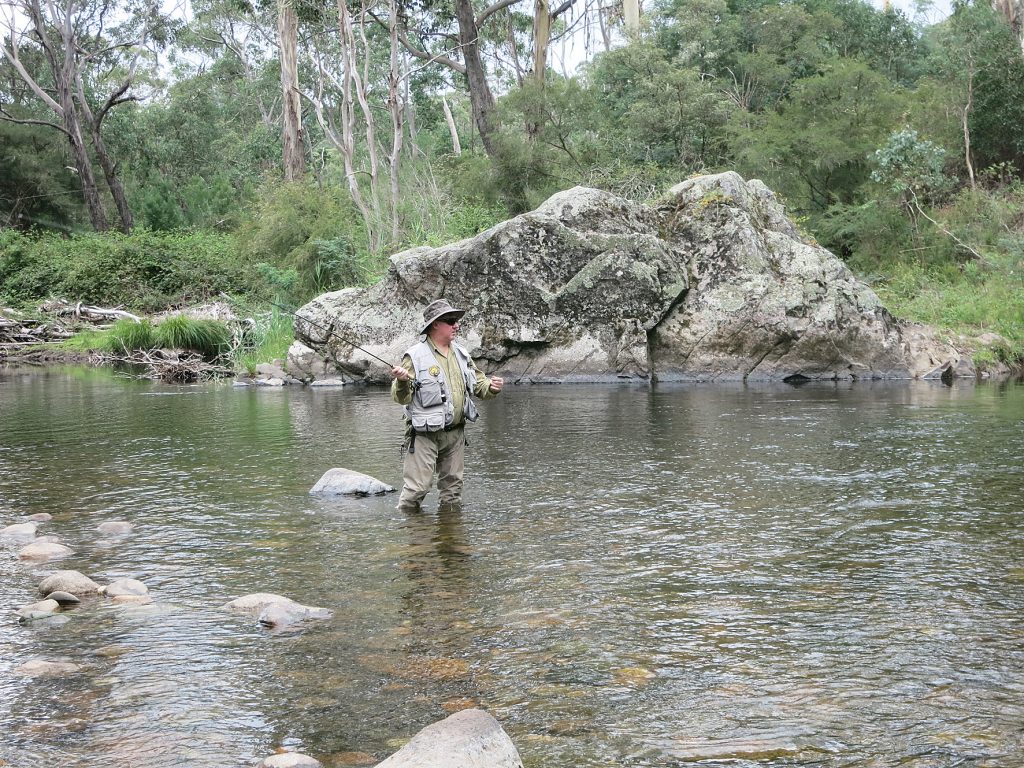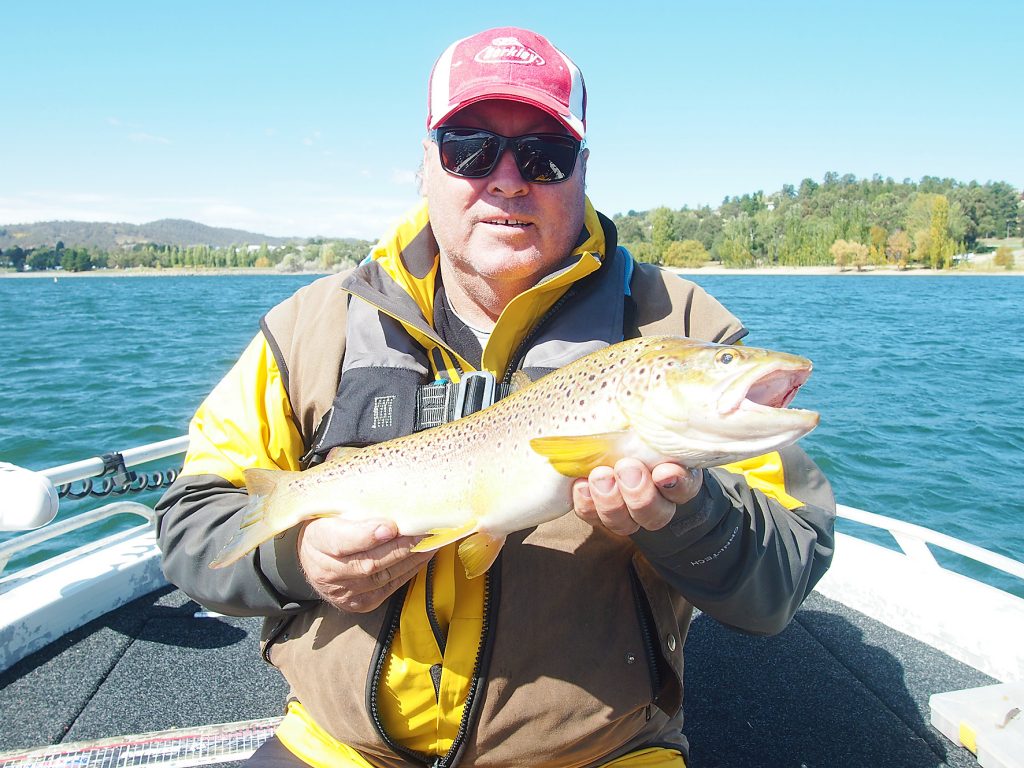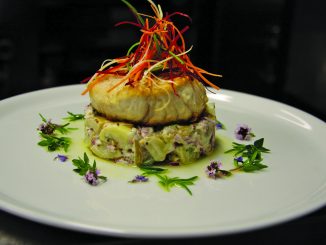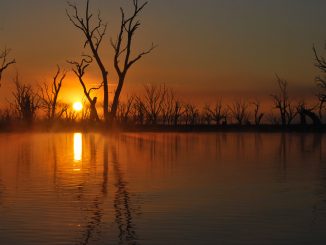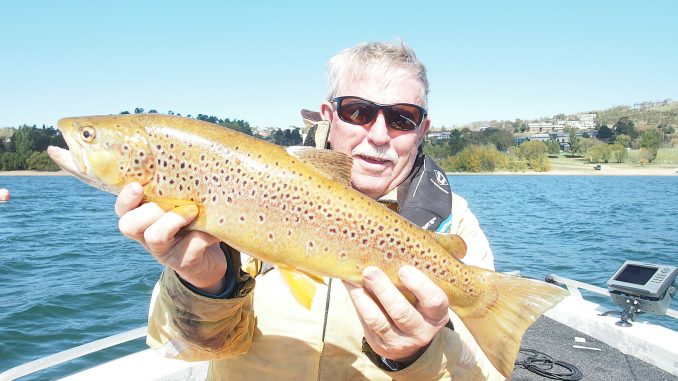
by Gary Brown •
It had been a while since I had last paid a visit to Lake Jindabyne in the Snowy Mountains. When I recently visited for the Steve Williamson Invitational trout competition, I was amazed at how much the area has changed.
There’s one thing that hasn’t changed though, and that’s the brilliant trout fishing that Lake Jindabyne has to offer when the conditions are right. For those of you who have never been there, you can troll, spin, bait and fly fish for brown, rainbow and brook trout, as well as Atlantic salmon, in the lake, and the surrounding streams and rivers, like the Snowy, Mowamba and Thredbo Rivers.
Lake Jindabyne is approximately a 5-hour drive from where I live in the Sutherland Shire, and is about 3.5 hours from Batemans Bay, 2.5 hours from Canberra, 3.5 hours from Albury and 1 hour from Cooma. It’s a conveniently central place to come and chase a few salmonids.
Even better, you don’t have to have a boat to get amongst a few trout. There are plenty of places where you can soak a bait, spin from the shore or in a stream or river. Alternatively, if you are up for it, you can have a go at fly fishing.
You can fish Lake Jindabyne year-round, but the freshwater streams and rivers in NSW are open for only a few months of the year. The official opening of the State’s trout season started on Saturday 29 September 2018, and will close on Monday 10 June 2019. This closure allows the species to travel up rivers and streams to breed and replenish numbers.
I got my start chasing trout by fishing with some great anglers over the years. The likes of Steve Williamson, Mike Spy and Dick Lewers come to mind, as I have learnt so much from them. Now I hope to pass on some knowledge to you.
To get you started on fishing the area, I have selected 16 places I have fished over the years that have been productive for me. If you refer to the map you will see that I have listed spots 1 to 16. Trolling is 1 to 4. For bait fishing refer to spots 5 to 8, and for spinning refer to spots 9 to 12. If fly fishing is your preferred method, try spots 13 to 16.
TROLLING
Whether you are trolling while using lead lines, down riggers or flat lining, spots 1 to 4 will have you in with a chance of getting amongst a few trout or Atlantic salmon.
1. Try trolling your shallow diving hardbodied lures while flat lining in close around the islands. Out deeper you could try tying on Tassie Devil No 40 Frog or a No 97 Corrooboree Frog.
2. In close troll Mepps Black Fury Tandem, and out wide try scrub worms behind a set of Ford Fenders.
3. As you are allowed to have two rods each in freshwater, try trolling. If there are two of you in your boat, you can try trolling a couple of shallow hardbodied lures in different colours, and either downrig or use a leadcore line on the others.
4. Take care when trolling here as there are a few shallow boulders. The deeper water is good for downrigging.
BAIT FISHING
You will need to check the NSW Fisheries website as many of the rivers and streams that run into Lake Jindabyne are illegal to bait fish in. However, you can baitfish year-round in the lake – it’s just a matter of deciding which bait to use.
I have found that the best time to bait fish is early in the morning or late into the afternoon when the water level is rising. This usually occurs in spring when the ice is melting. Mudeye fishing is usually done during the summer, and worms are a year-round option.
Other baits that are worth a try are bardi grubs and yabbies. You could also try using Berkley PowerBaits.
If you are fishing where there is a lot of weed, try suspending your bait under a bubble float or a very small bobby cork. You could always try fishing with a small spitshot or an unweighted bait where the area has a clay or sandy bottom. When fishing amongst the boulders, I usually use a running sinker down onto a swivel with a long leader. To help keep the bait off the bottom I put in a bit of PowerBait.
Spots 5 to 8 are good places to start your bait fish. Just remember to check out the access tracks before you set out, as some places may be accessible only by walking or with a 4WD.
SPINNING
If trolling and bait fishing are not your cup of tea, and you prefer to be more active, there are literally hundreds of places where you can take a handful of lures down to the shore and spin for trout. I have just included four in spots 9 to 12 for you to try out. I am sure that you will find plenty more. It’s just about locating where the fish are feeding at different times of the year.
The reason I have chosen these spots is that you can use shallow hardbody lures, Mepps spinners or spoons, surface lures and HWS soft plastics in the shallows, and if that doesn’t work you could try casting out wider with blades, Tassie Devils and heavier jigheads with soft plastics.
As for the streams and creeks, you could also try them during the open season with a small Mepps No 1 spinner, Rapala CD Minnows or any other small narrow or fat body floating minnow.
FLY FISHING
Fly fishing isn’t for everyone, but if you want to try something new, it’s never too late to start. Fly fishing is easy to learn but difficult to master; even though it took me only a couple of days to learn how to cast a fly, and only a couple of days more to start catching trout on fly, I am still learning more about how to fly fish every time I go. There is always something new to learn every day.
Winter fly fishing with the aid of a good set of polarised sunglasses can at times be the best of what the country has to offer. The flies that I have had the most success on during the cooler months of the year have been the Woolly Bugger and nymphs.
As the water level rises with the spring melt of the snow, and the fish are extremely hungry after their spawning run, I work the deeper weed beds with a floating fly line with a sinking tip to get the fly down that bit deeper.
During the summer months I can’t go past my floating fly line while using my self-tied Red Tag, Royal Coachman, red spinner and Christmas beetle flies. As with all fly anglers I do carry a large range of other flies, just in case the fish don’t like what I have on offer.
Hopefully I have given you a small insight into what Lake Jindabyne has on offer for you. If you are going to venture down to Jindabyne for a fish, I recommend that you check out the Alpine Angler just out of Cooma as they gave me a few tips on what was happening during my last trip. While you’re at Jindy, you should also call into the Lakeside Lure and Tackle shop and have a chat to the new owner Brian Burns, who has a wealth of knowledge on how to fish the lake.


